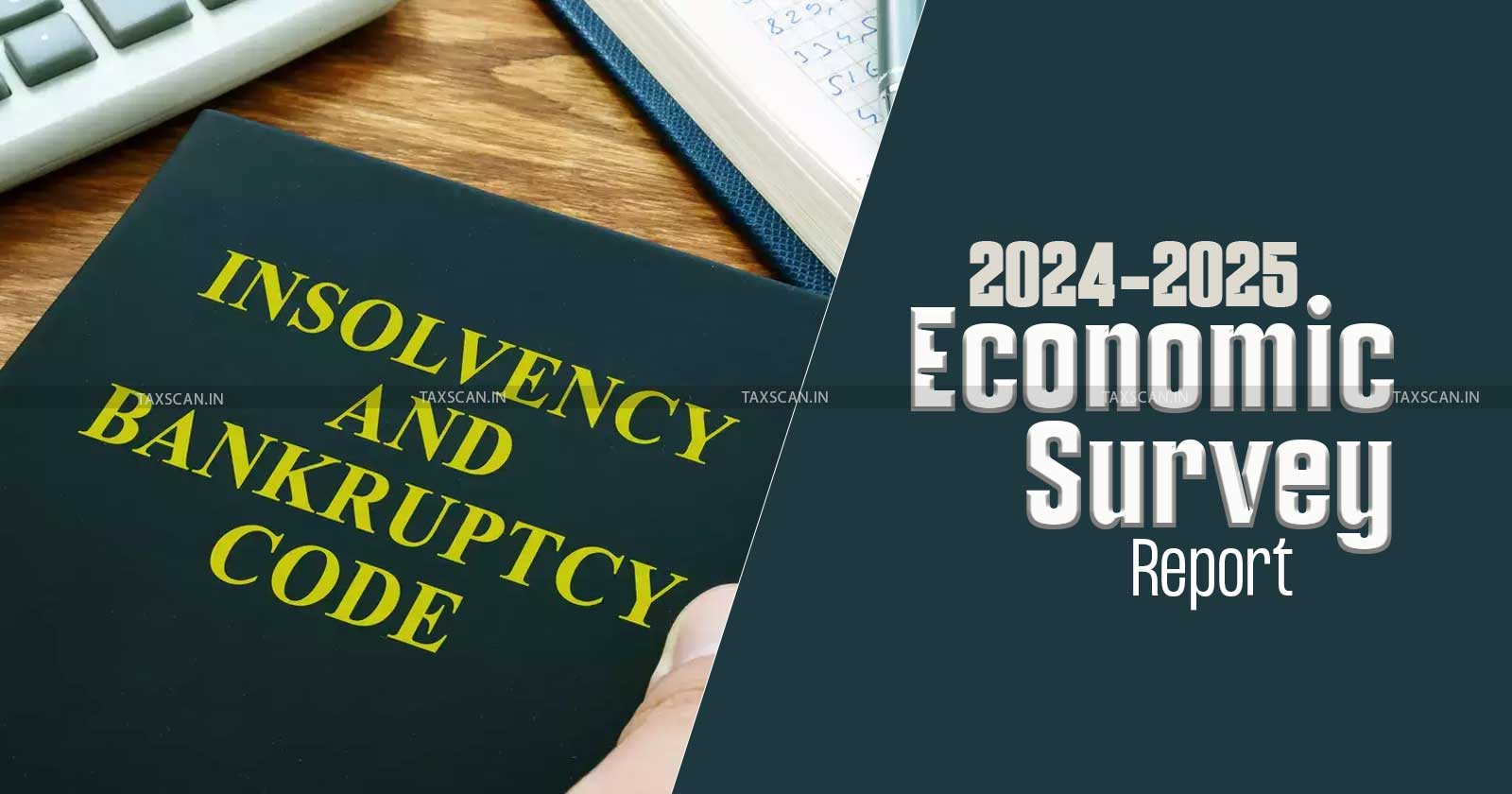Economic Survey Report 2024 - 2025 urges Operational Efficiency Reforms under IBC
The report urges the introduction of insolvency and bankruptcy reform to improve operational efficiencies to speed up the resolution process

Economic Survey Report – 2024 – 2025 – Operational Efficiency – IBC – taxscan
Economic Survey Report – 2024 – 2025 – Operational Efficiency – IBC – taxscan
The Economic Survey 2024-25 was tabled in the Parliament today (January 31, 2025) after President Droupadi Murmu’s address commencing the Budget Session. The report urges the introduction of insolvency and bankruptcy reform to improve operational efficiencies to speed up the resolution process. This is especially important for MSMEs, for whom legal costs can prove to be substantial.
Improving time efficiencies in the system comes down to using innovative resolution routes such as the pre-pack arrangements for MSMEs, inter-disciplinary capacity building of resolution professionals across legal, financial and industry basics and minimising judiciary delays in proceedings. Operational efficiencies require a balancing act between fairness and fastness of resolution. Further, improvements are also required to ensure the timeliness of the insolvency and bankruptcy processes under the Code.
Get Complete Coverage on Budget 2025-26, Click Here
The IBC lays a time limit of 180 days from the date of admission for closure of an insolvency process, with a provision for extension by 90 days with the approval of the committee of creditors (CoC) and the adjudicating authority (AA), i.e., the NCLT. The regulations provide detailed timelines for various processes to be undertaken in the corporate insolvency resolution process (CIRP) and liquidation processes.
Current evidence shows that the 1068 CIRPs, which have yielded resolution plans (as of the end of September 2024), took an average of 582 days (after excluding the time excluded by the AA) for conclusion, and the 2,630 CIRPs, which ended up in orders for liquidation, took on average 499 days for conclusion.
The time required for an application to be admitted and any periods that are omitted by the AA's order for reasons specified by it are not included in this average time for a CIRP. In the cases that have been settled thus far, AA has excluded an average of 116 days of time. This is roughly 64% of the time allotted by the Code to finish the procedure. The AA's time is excluded, which aids in addressing Code compliance. However, it ignores the effect on the corporate debtor's declining business and economic worth.
Get Complete Coverage on Budget 2025-26, Click Here
Further, addressing issues in the insolvency procedures and the Tribunal’s administrative processes would help to reduce pendency in the long term. Delays in admission are of particular concern since, until admission, the company continues to be controlled by the defaulting debtor. While admission is awaited, the opportunities for value shifting, funds diversion and assets transfers increase, leading to further erosion of the value of the CD.
While the prescription is admission in 14 days, in FY21, the average time for admission of 153 applications by operational creditors (under section 9 of the Code) was 468. In FY22, an average of 650 days was taken in the admission of 207 applications. Reasons for delay in admission occur as the AA tries to establish the existence of debt and default, as promoters file objections. Including evidentiary proof in the form of contracts, GST filings, etc., is all provided for, but all of this can be contested.
Support our journalism by subscribing to Taxscan premium. Follow us on Telegram for quick updates


